David Hockney On Photography
David Hockney discusses the role of photography in his art and perception.
View more Photographer’s Videos here.
David Hockney discusses the role of photography in his art and perception.
View more Photographer’s Videos here.
Having studied Theatre Design in Washington and Butoh dance in Japan, Heather Hansen’s passion knows no bounds. Inspired by Gutai action painters during her time in Japan—artists that famously threw mediums like paint or clay at canvases in post-war Japan—Heather creates life-size, symmetrical drawings capturing dance permanently on canvas. “I work to refine my kinetic drawing to something graphically and intentionally essential,” Hansen explains as we lounge in the backyard of her New Orleans home in the Marigny. “Charcoal allows me to record each gesture as it’s happening. You can see the story.”
“Dance has been a little overlooked in the arts, in part because it’s a little bit ephemeral,” she points out. “Music is too but it’s different, you can keep a tune in your head. With dance, people usually say, ‘Oh that was beautiful or that really made me feel something.’ They don’t remember the movements. They don’t have anchors for it. I’m primarily interested in finding ways to anchor dance.”
Find out more about Heather Hansen here.
View more performing arts inspiration here.
After
Before
Color to black and white conversions are radical transformations of an image. They establish the tonal foundations of a neutral image, creating tonal relationships by determining which areas of an image become light and which are dark. While this process can generate some localized effects (all blues become darker or lighter), this is quite different than selectively lightening and darkening an image to accentuate existing tonal relationships (only select blue areas become darker or lighter). Selectively enhance a tonal structure after conversion, rather than before. Selective enhancement may yield dramatic results.
Here are two ways.
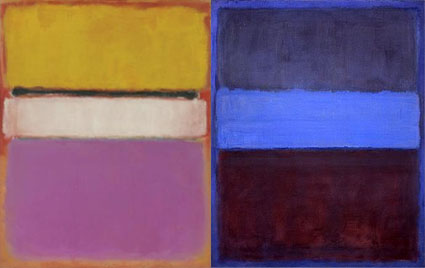
Sometimes the things we resist influence us the most. For me, this was certainly the case with the paintings of Mark Rothko.
As a young man, I found myself alienated from many modernist works. I felt they were overly intellectual; you needed a degree to begin to approach them much less understand them. They didn’t meet the audience halfway. Some of them even needed critical interpretation to be fully resolved.
Nonetheless, my intensely emotional reactions to Mark Rothko’s paintings were undeniable. Standing before these fields of color produced a physical sensation, much like listening to music. Rothko was able to communicate powerful emotions with the simplest means. Often his canvases were composed no more than two rectangles inside the larger rectangular field of the canvas or as few as three colors. Unlike DeKooning, gesture isn’t what communicates emotion – Rothko’s canvases are stained. Rothko’s use of scale, quite different than Albers’, also impressed me; the large fields immerse you in the sensation of color, further intensifying it.
Rothko’s painting was more than an exploration of optics, it was also a spiritual quest. It’s not just color for color’s sake; it’s color placed in the service of the human spirit. Upon further study, I found that many early modernists shared a similar spiritual impulse and used abstraction in a quest for a universal language that reached beyond time and culture. For me this was the link between the modernists I appreciated and the ones that left me cold. It was a quest I resonated with. It started a chain reaction within my thinking about and appreciation of art. I continue to search for similar qualities in my own work.
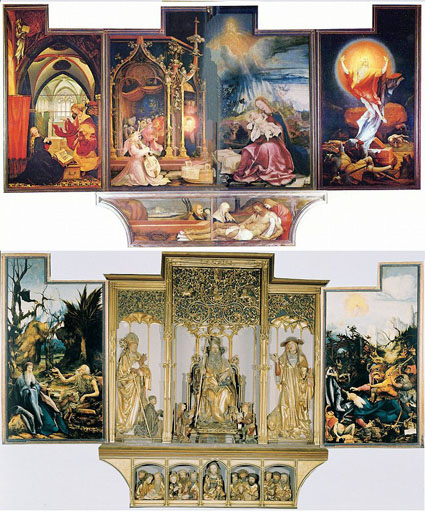
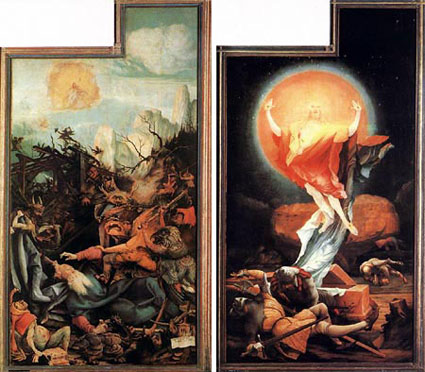
Despite a challenging relationship with the church, I still find the content in the Bible and the good acts it inspires extremely inspiring. I had strong spiritual feelings as a very young child and they’re still with me today. Many works of art inspired me, none more than Matthais Grunewald’s Isenheim Altarpiece. It’s a complex masterpiece. Two panels in particular mean a great deal to me. The Resurrection epitomizes the word beatific – transcendently wise, compassionate, and fulfilled. The Temptation of St Anthony is a riveting portrayal of a supreme test of that state and how it can survive and even be strengthened by confrontations with the darkest negativities.
I see images like Grunewald’s Isenheim Altarpiece and I feel called to try and rise to some small measure of this greater state of being. Achieving this depth of perspective and strength of expression is a primary goal of my life/art. For me, making art is a call to learn and put that learning into practice.
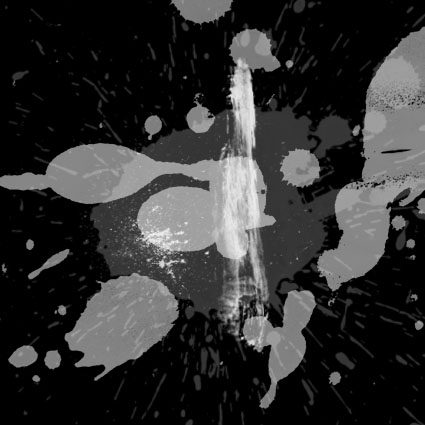
Photoshop Free Brushes offers high quality Photoshop brushes.
They offer so many free brushes! Where do you start?
Try these six collections.
1 Spatter Brushes
2 Gore Brushes
3 Vintage Paper Brushes
4 Water Brushes
5 Cloud Brushes
6 Star Brushes
Find more free brushes at Naldz Graphics.
Read more on Photoshop painting techniques here.
Learn more in my digital photography and digital printing workshops.
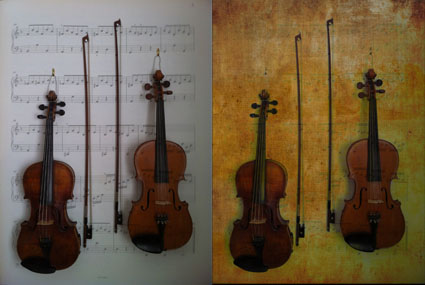
Flypaper Textures offers a variety of high quality easy-to-use downloadable texture files.
(I use them all the time with my iPhone photographs.)
You can get 15% off Flypaper Textures with this code – johnpaul .
Visit Flypaper Textures here.
Plus, mouse over images on their blog for before / after previews.
Read A Little Stress Can Be Good For Your Images on The Huffington Post.
“Stress can be good for your images. The analog materials used in painting and photography, often add rich textures that can enliven images. Throughout the history of art, drips, scratches, cracks stains, grain, vignetting, light leaks, fading, erasure and other analog artifacts have all been successfully used to add a compelling character to many images. Far from being something to be avoided, these effects can become a creative wellspring you can draw from time and time again.
Distress your photographs a little and you can make contemporary photographs look antique. Distress your photographs a lot and you can make photographs seem like they were made with other media – pencil, ink, paint, etc. The same effects and sensibilities can also be applied to and enhance images made by hand, with paint or with painting software, or computer rendered, whether 2D or 3D.
Stress can do a lot for your images …”
Chuck Close talks about his fascination with portraits.
Find more photographers on videos here.
Russell Brown innovates again!
Find more great Photoshop CS5 videos here.
Julianne Kost – Painting in Photoshop CS5 – Part I
Julianne Kost – Painting in Photoshop CS5 – Part II
Learn more about Photoshop and Lightroom in my DVDs and Workshops.